Update: The switch from reviews to Recommendations is now complete. Check out our guide on how to get more Recommendations on Facebook.
Facebook Reviews has become one of the most popular review platforms on the web. They compete with Google Reviews and are overtaking traditional review platforms like Yelp. In an effort to get back to their community-driven roots, Facebook has replaced Facebook Reviews with a new format called Facebook Recommendations.
The most notable change is the removal of ratings. Customers can either recommend or not recommend businesses with testimonials of their experiences using a “Yes” or “No” option. While TrustPilot is adding half-stars to effectively change to a 10-star rating system, Facebook is going from 5 stars to two options: yes or no.
In this post, we’re going to take a deep dive into Facebook Recommendations and explore how they’re replacing Reviews. We’re also going to cover what this means for businesses going forward.
What are Facebook Recommendations?
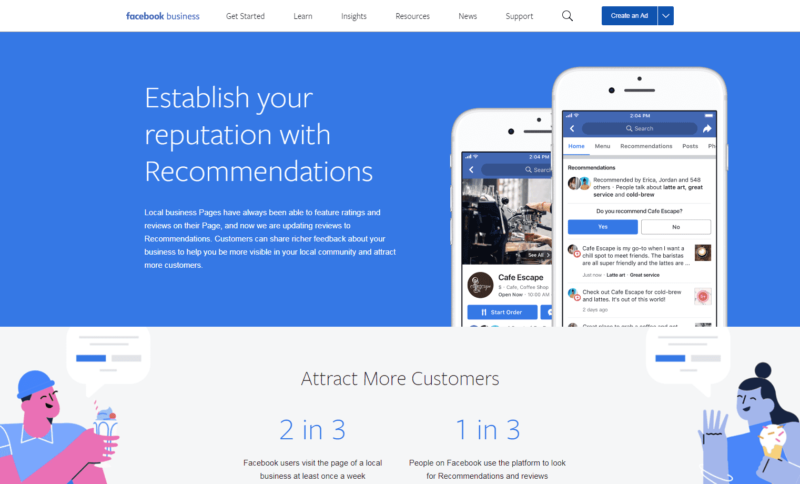
Facebook Recommendations are the new Facebook Reviews, as previously stated. The way they work is simple: when a user views your page, they’ll see a section called Recommendations and Reviews near the top. They also have their own user tab previously labelled “Reviews.”
Whichever way they choose to view your business’ recommendations, users are asked a simple question: ”Do you recommend this business?” They can answer “yes” or “no.” That’s the recommendation part. They can then leave a written review as well.
The Anatomy of a Facebook Recommendation
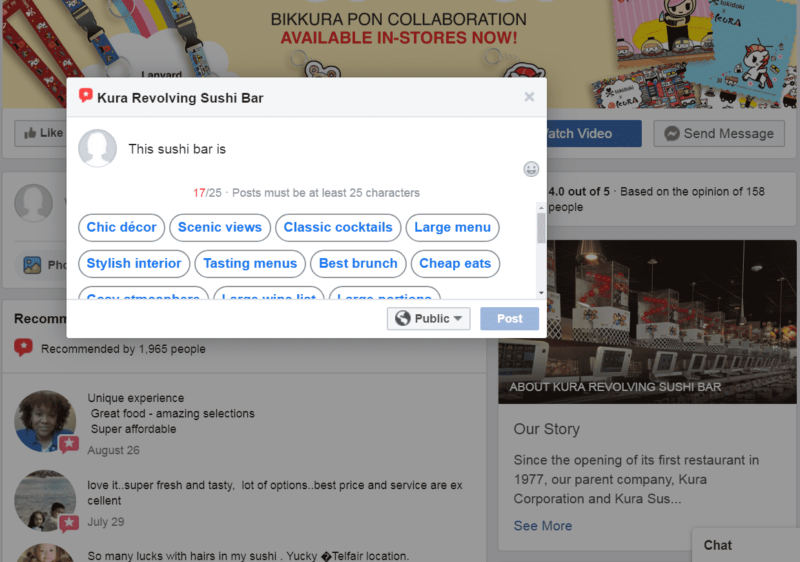
When a user creates a new recommendation, they can add text, images and tags. The text portion must meet a minimum character requirement. They’re also provided auto-generated tags they can use to round out recommendations.
Before posting recommendations, they can choose to make it viewable to the public, to friends only, to themselves only or to select groups through a custom configuration.
Facebook is hoping this design will spawn rich testimonials that benefit customers and local businesses alike. It starts with the minimum character requirement. By forcing customers to write more than a simple one to two-word review, recommendations can help eliminate short testimonials that do nothing to inform other customers or business owners about the pros and cons of a particular business or location.
Similarly, tags provide a quick summary of a business’ top traits. A few examples include “good for groups,” “cozy atmosphere,” and “child-friendly.”
The same goes for “don’t recommend” responses, only the tags list features negative traits, such as “not child-friendly,” “small portions,” and “slow service.”
How Facebook Recommendations are Replacing Facebook Reviews
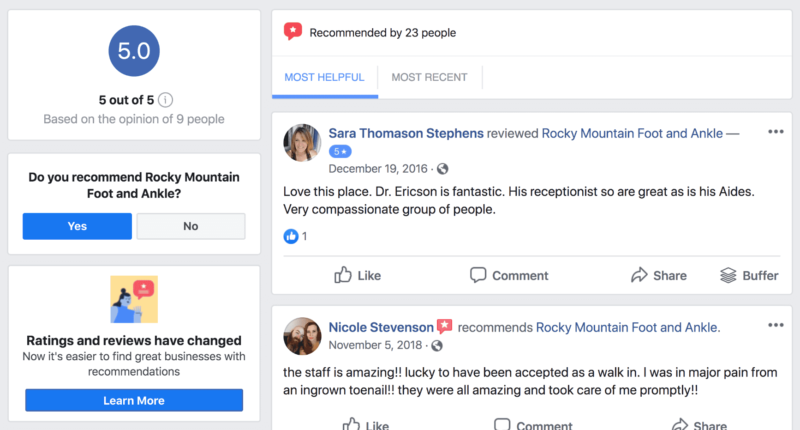
Recommendations are replacing Reviews. Instead of a star rating and a bit of text, recommendations are intended to provide more help with better written content, plus images, and descriptive tags.
The way in which recommendations are posted are also quite different from reviews. Instead of appearing publicly on a business’ page and only that business’ page, recommendations can be posted anywhere. Users can even choose to only have them viewed by friends.
Speaking of which, recommendations are also part of Facebook’s quest to get back to its roots as a community-driven platform. Not only can users share recommendations with friends, they can request them by asking friends for recommendations in specific cities.
When their friends reply with recommendations, Facebook will automatically link businesses they recommend to their comments. They’ll even attach reviews and addresses.
Businesses also have more power when it comes to reporting fake or unfair recommendations. You can do this with the “Give Feedback On This Recommendation” setting. When you click this, you can report recommendations as being “not relevant,” “unfair,” “harassment,” and more.
Here are a few additional changes, some of which have already been mentioned:
- The change has been rolled out to local businesses.
- The change is part of Facebook’s overhaul of the UI for mobile business pages.
- The Reviews tab on your page is now the Recommendations tab.
- Along with the Recommendations tab, reviews and recommendations have a higher position on your page.
- Your old reviews and ratings will still be visible.
What This Change Means for Your Business

One of the biggest issues you’re likely worrying about is what’s going to happen with the reviews and ratings you already have. You’ll keep the average rating you already have, and your reviews will still be visible wherever reviews and recommendations are showcased.
If you currently have a low rating and are worried this change may lock you into that score forever, don’t fret. Your rating will still go up and down depending on the number of recommendations and anti-recommendations your business receives. Users simply won’t be able to raise or decrease this overall rating with a star rating. Facebook also hasn’t explained exactly how your new rating is calculated.
How to Get Started with Facebook Recommendations
The transition from Reviews to Recommendations should be seamless as Facebook rolls this feature out to more and more users and businesses. You should ensure Recommendations is enabled regardless. Go to Settings → Templates and Tabs → Reviews (may be labelled Recommendations), and ensure the setting is switched to ON.
You’ll also notice a setting called Share Reviews/Recommendations Tab while you’re there. This is a URL you can use to encourage customers to leave recommendations, though we recommend using the ideal link we talked about in a previous article.
This is something you should do as often as possible when you first transition to Recommendations. This is because tags are only auto-generated for businesses who have received a certain number of recommendations.
The Pros of Facebook Recommendations
The biggest advantage Recommendations has over Reviews is how accessible they are. They’ll appear in areas where customers are most likely to find your business on Facebook, such as Maps. They’ll also appear when customers search for your business or talk about it.
Plus, since Recommendations are designed to enhance Facebook’s community features, recommendations from your potential customers’ closest friends will appear first. This makes the social proof that much more effective and personal for your potential customers.
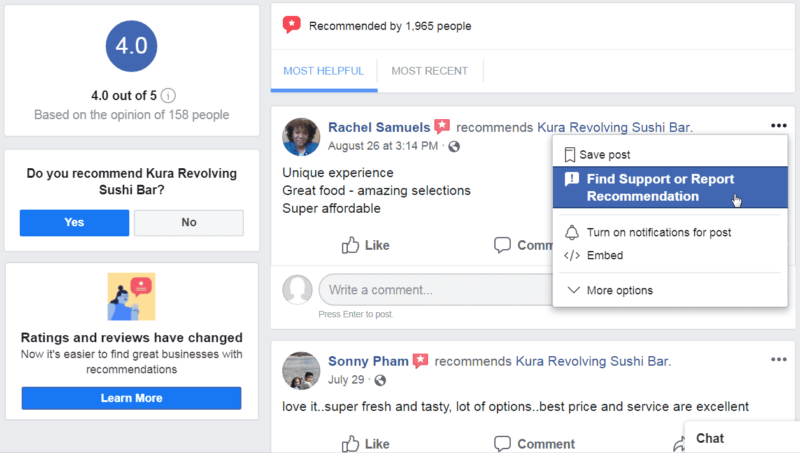
It’s also easier to report recommendations you feel are fraudulent or harassment. This can be useful if you become the victim of targeted harassment or receive a negative recommendation from a “customer” you’ve never even worked with. Facebook will need to review the claim, but it allows you to get your foot in the door on these issues at the very least.
We should also mention the new forms of content customers can add with Recommendations. Images can provide a preview potential customers can use to get a peek into what your business your business is like, without actually visiting it. They help solidify positive testimonials.
Tags are useful for two reasons. The first is the way they provide a quick summary of your business. Potential customers no longer need to read entire testimonials or dig through your Facebook page to learn whether or not you’re child friendly or serve classic cocktails.
Furthermore, tags can help customers write recommendations in an efficient manner. This is especially true for customers who hesitate to leave reviews when they aren’t sure how to put their experience into words.
The Cons of Facebook Recommendations
Most of the reception around Facebook Recommendations has been positive. However, some businesses and marketers have cited a couple of concerns. First, they’re worried that the high level of accessibility Recommendations provides may lead to a larger number of fraudulent testimonials despite how easy Facebook makes reporting them.
Second, some marketers are worried certain customers may forego leaving recommendations altogether. They’re specifically talking about customers who leave 2-4 star reviews. Because the “yes/no” aspect of Recommendations forces you to choose between two binary options, some marketers are worried this particular group of consumers may feel limited when it comes to writing reviews.
Why are Things Changing?

Facebook was founded by Mark Zuckerberg in 2004 and grew to become the most widely used social network by the time the 2000’s came to a close. This was around the time the platform started adding more features for businesses.
Six or seven years later, the platform now has several controversies and lawsuits under its belt, most of which relate to Facebook’s tendency to favor businesses and investors over the security and privacy of their users.
The biggest example is the data breach that allowed political data firm Cambridge Analytica to access over 50 million Facebook accounts on behalf of President Donald Trump’s 2016 election campaign.
The most recent controversy occurred in late 2018 when Facebook was found guilty of sharing private user data with major tech companies.
Zuckerberg’s Promise to Rebuild Facebook
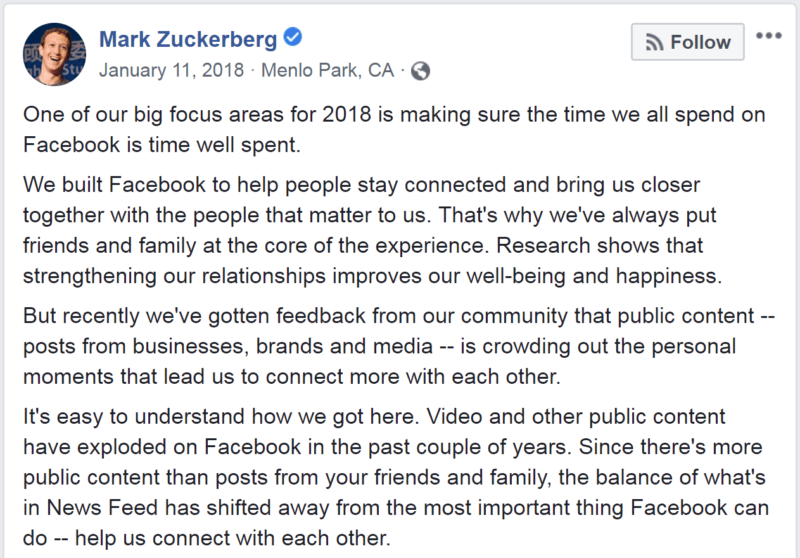
Mark Zuckerberg published a Facebook post on January 11, 2018. In the post, he vowed to make Facebook more like the platform it used to be. That is, a social network that people use to connect with friends and family.
Here’s a specific excerpt from this post that explains the changes you’re seeing and will see in regards to Facebook’s business features.
We’re making a major change to how we build Facebook. I’m changing the goal I give our product teams from focusing on helping you find relevant content to helping you have more meaningful social interactions.
We started making changes in this direction last year, but it will take months for this new focus to make its way through all our products. The first changes you’ll see will be in News Feed, where you can expect to see more from your friends, family and groups.
As we roll this out, you’ll see less public content like posts from businesses, brands, and media. And the public content you see more will be held to the same standard — it should encourage meaningful interactions between people.”
Businesses and publishers started seeing changes in 2018, and there will likely be more to come as Facebook tests and implements new strategies that favor social interactions over content from businesses.
Facebook Recommendations are simply part of those changes.
A Word from Our Founder
I think the change from Reviews to Recommendations is great in principle. The things they’re trying to accomplish in making reviews more effective and useful are admirable. I still don’t trust Facebook and only recommend using it as a supplement to a great website where you own your own content.
I also don’t like the fact that they’re taking a 5-star system down to just a binary positive or negative choice. I think there’s often more nuance to a rating. But I get it: either you would recommend it or you wouldn’t.
You might be thinking “but doesn’t Starfish Reviews use that same positive/negative binary system?” Yes, it does. However, we’re not running a review platform taking the final review. Our WordPress plugin is just trying to gauge the user’s feelings toward a business, product, or service, before they go to the actual review platform to leave a review. So we’re trying to make it super simple while leaving the graduated-rating to the review platform. Put simply: I think it’s really effective how we use it, but it’s definitely debatable how Facebook is using it.
The great thing is that Starfish Reviews still works awesome with Facebook Recommendations, and you don’t have to change anything from how you were using it with Facebook Reviews before.
Tevya Washburn (creator of Starfish Reviews)
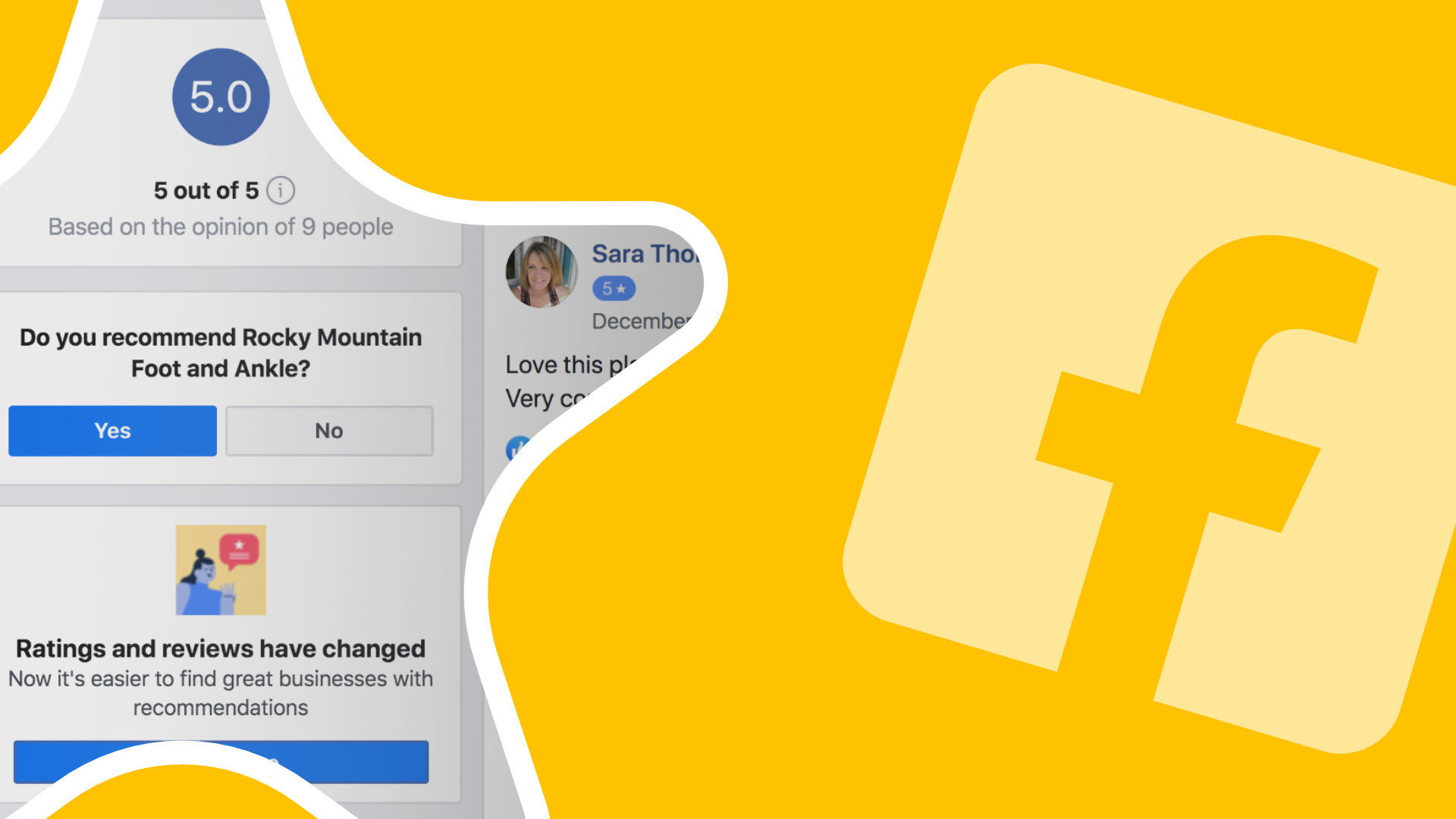


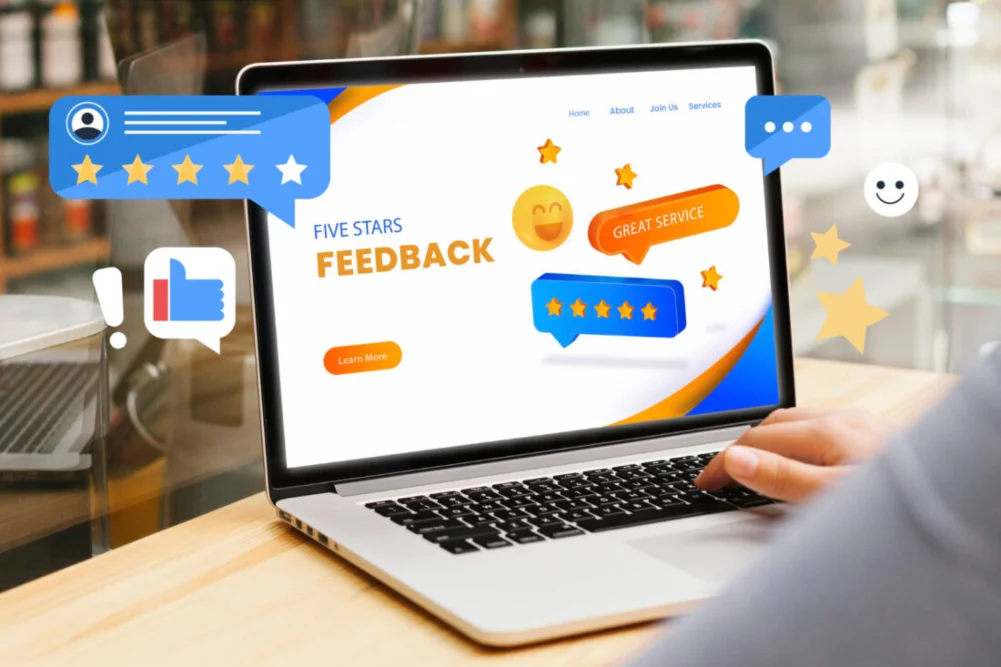

0 Comments